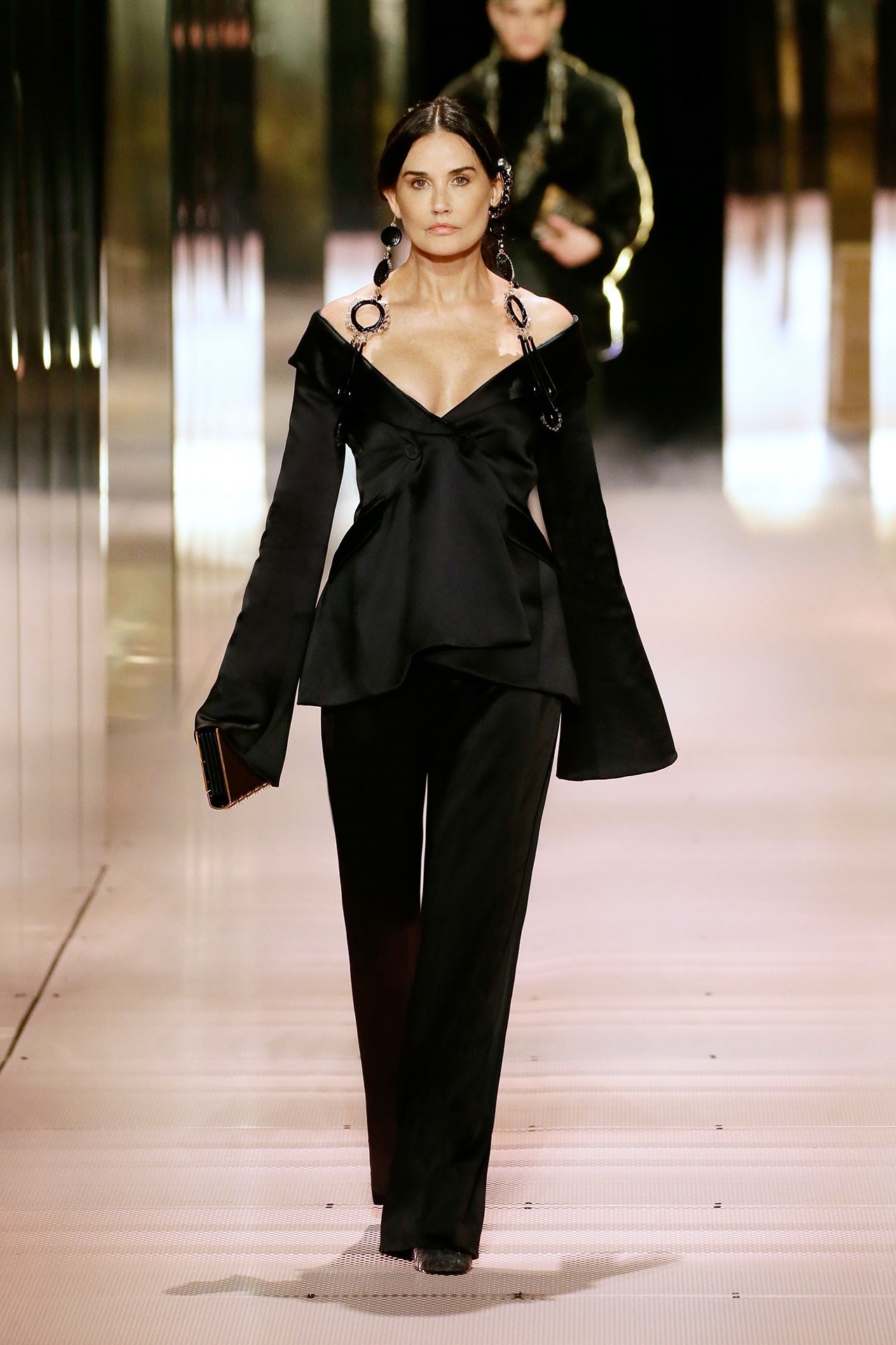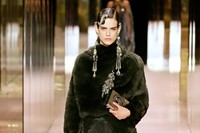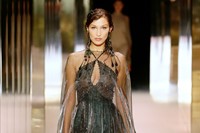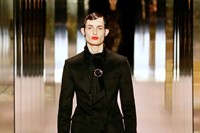Kim Jones’ Fendi haute couture show was a debut, in many senses. It was his first collection for the Roman house, of course; it was also his first ever womenswear collection, and Fendi’s debut spring haute couture show (they normally show a single couture collection each July). And it was Jones’ bold foray into haute couture, the custom-made, coveted creative zenith of fashion, where money is no object and the extraordinary becomes not an exception, but a casual demand. Drape a satin dress by hand – moulage, couture calls that – and encrust it with minute springtime flowers? Sure. Stud a cape and gossamer-fine dress with millions of pearls? No problem. Recreate swirling patterns of marble in intricate hand-beadwork? Want matching boots? Nothing is impossible.
Couture is unique, transformative. Wearers – there are few, maybe a thousand in the world – talk about couture being simultaneously corrective and comforting, shifting their body into the way they wish to be perceived, and then fitting like a second skin. Each piece crafted by hand and made entirely to order – the fabric cannot be cut before a client’s measurements are taken – it is a profoundly personal experience, made by individuals for individuals.
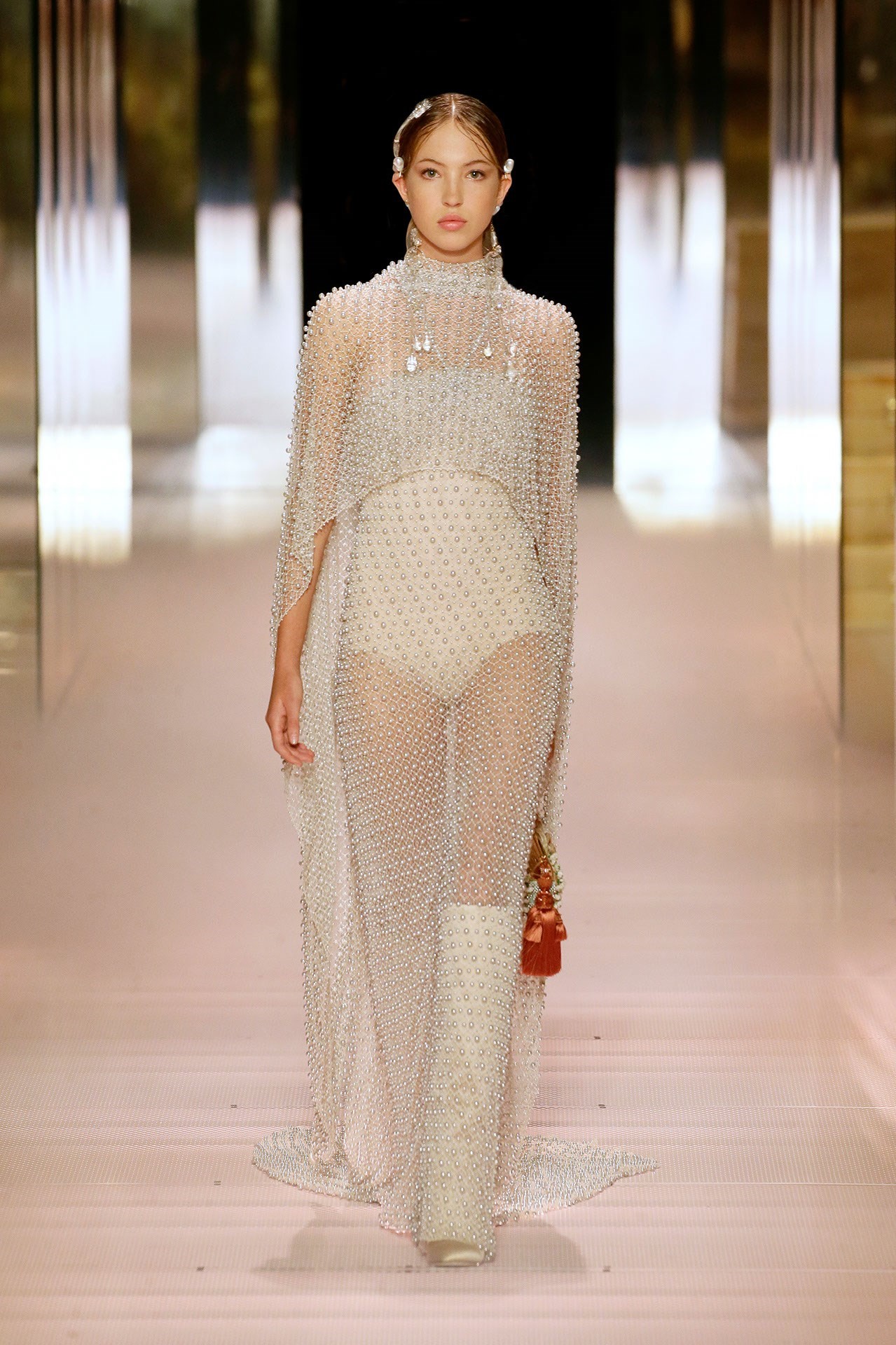
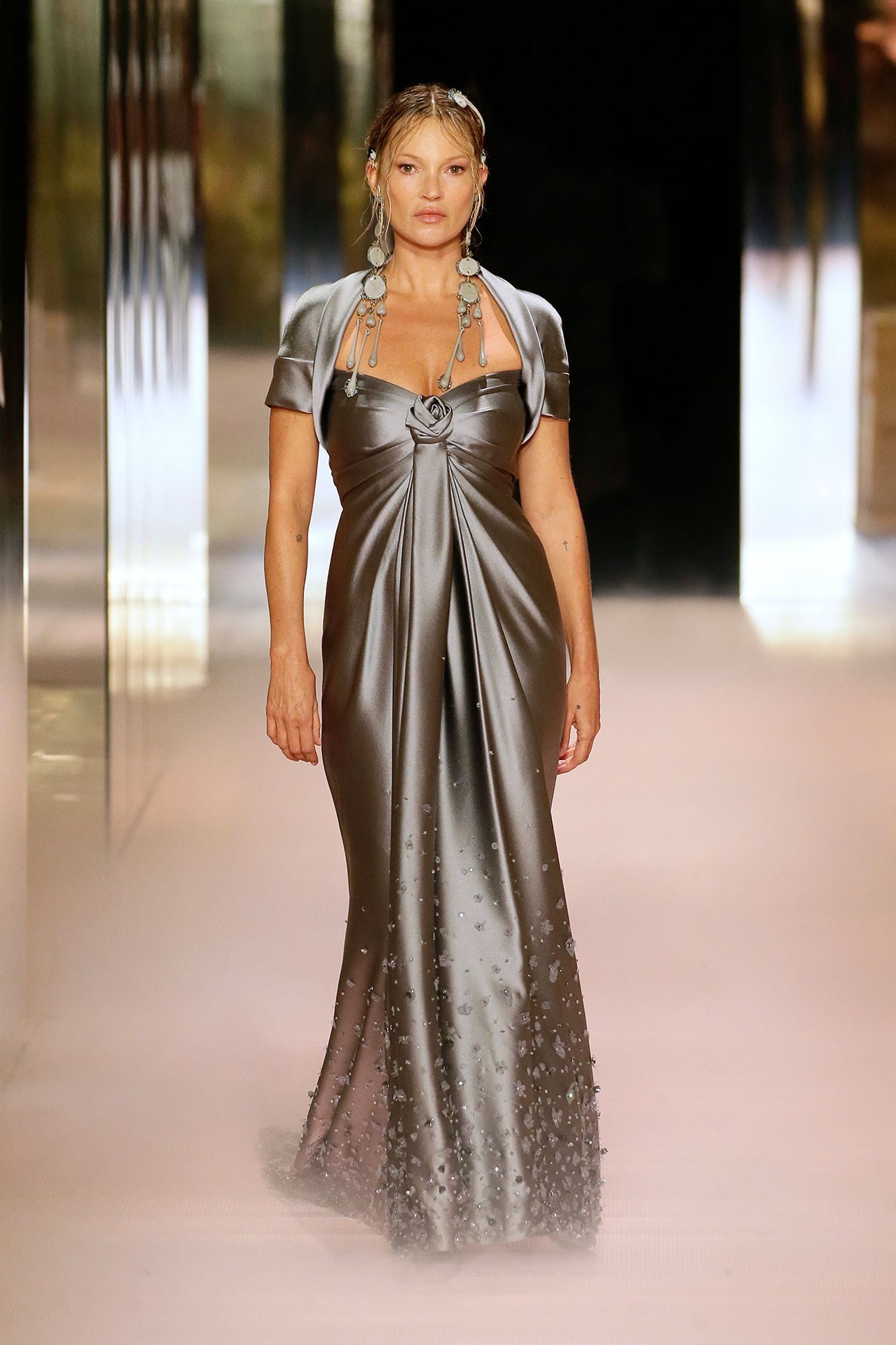
That idea of the personal triggered something with Kim Jones, for this Spring/Summer haute couture collection. He turned to one of the great loves of his life, the Bloomsbury Group, whose work he had loved since he was a teenager, and whose art, craft and literature he collects. He has a particular affinity with Virginia Woolf, a woman he cites as “incredibly modern – independent, living her life how she wished.” His favourite Woolf work is Orlando, whose themes of transformation and time-travel definitely echo haute couture – born, and borne, as it often seems, from another time. Of course, Orlando changes from man to woman – just like Jones’ career. And in his library at home he has a catalogue of paintings by Vanessa Bell, executed in the gardens of the Villa Borghese. “All roads lead to Rome,” Jones quips and smiles.
From Bloomsbury, to Borghese, to the Bourse, the Paris stock-exchange, where Jones built his Fendi set – plexiglass enclosures, protective, formed a labyrinth web of Fendi double-Fs. They weren’t protecting the clothes – although precious, these garments are decidedly made for real-life, and Jones has scheduled appointments with clients beginning the day after this much-anticipated debut. They mirror Jones’ own, probably priceless collection of manuscripts and first editions – with multiple editions of Orlando – which he himself reads. The screens were, of course, evocative of the restrictions of Covid-19 – they couldn’t not be. They were also practical in that respect. But they also protected the extraordinary cast Jones chose to model this collection.
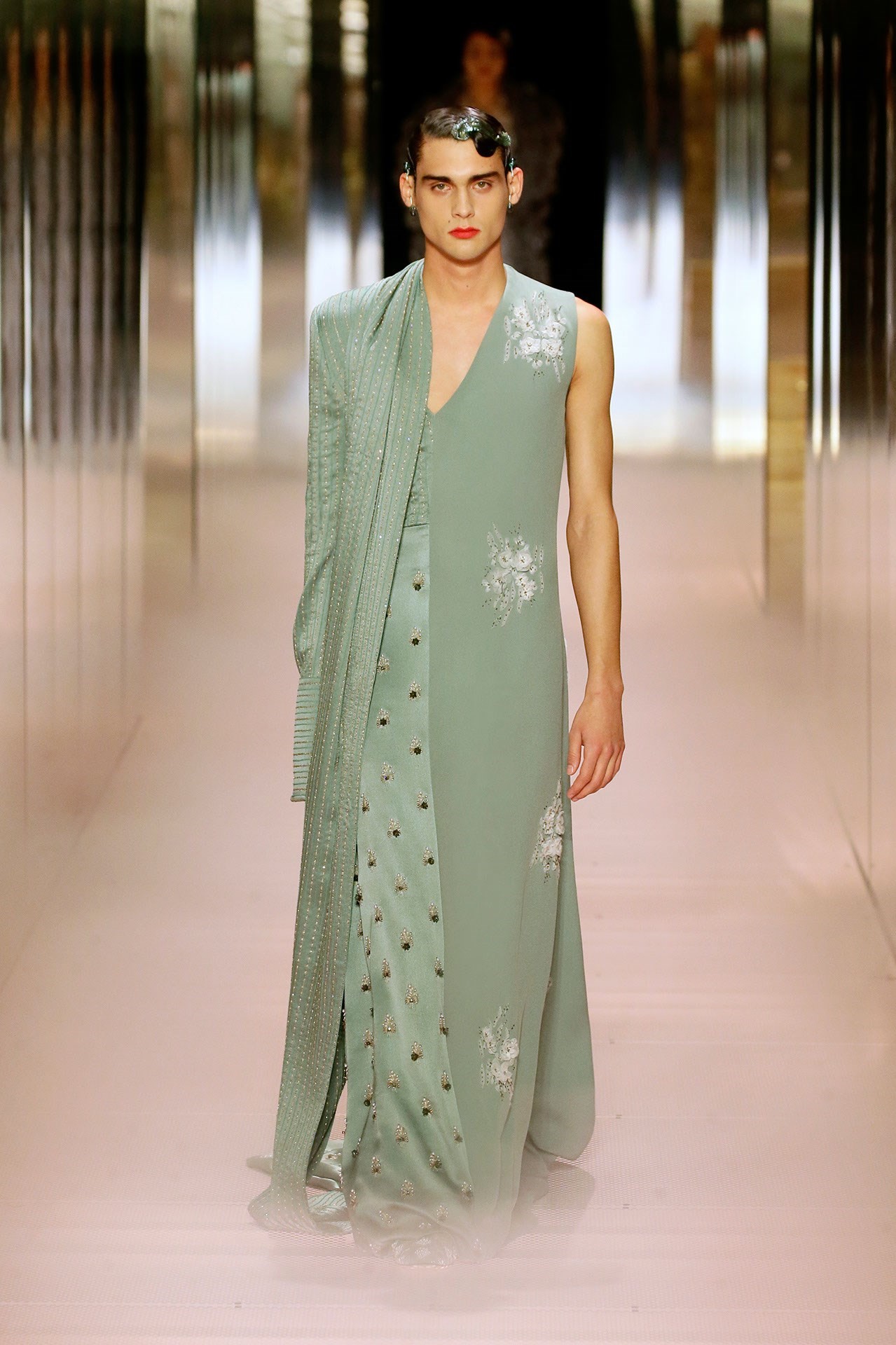

Mirroring his own assertion of Woolf as a modern, independent woman, Jones assembled her contemporary counterparts – models, muses, friends. A group, like Bloomsbury, he finds inspiring. Many had familial connections: Kate Moss walked alongside her daughter Lila; Adwoa Aboah with her sister Kesewa; Silvia Fendi’s daughters Leonetta and Delfina Delettrez (who created the Murano glass jewellery for the collection); Christy Turlington with her nephew James. Yes, Jones mixed men into this show – you couldn’t not, with Orlando. And others, like Naomi Campbell, were part of Jones’ own extended fashion family.
The message of the clothes: masculine and feminine, romance and sensuality, delicacy and strength. They demonstrated the prowess of Fendi’s Roman ateliers with their delicate embroideries, surfaces of opera coats richly figured to resemble roses – which Jones sees as a new Fendi hallmark. These weren’t clothes for slouching at home: Jones is looking to the moment when we all – couture clients included – can finally escape outside, and dress to be seen. Like Orlando, there was an interplay between present and the past: alongside that contemporary feel, there were subtle nods to the legacy of the house. The family focus is what Jones feels Fendi is all about – propelled to success and world renown, as it was, by five sisters. The palette was the sun-bleached stone and marble of Roman palazzos, and the man-woman thing wasn’t just from Woolf – it came from the late Karl Lagerfeld, who in 1993 sketched an idea for a dinner-jacket evening-dress hybrid. Jones found it in the archives – and ran with it, abstracting it as a loving and heartfelt tribute to the man the Fendi sisters called a brother. As Woolf herself wrote in Orlando: “what the poets said in rhyme, the young translated into practice.”
